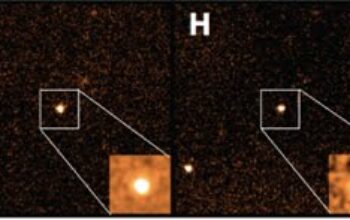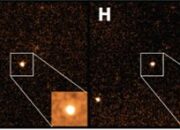In the domain of cryptography, the Advanced Encryption Standard (AES) and the Secure Hash Algorithm (SHA) serve as foundational pillars in the realm of data security and integrity. However, the advent of quantum computing introduces a paradigm shift, threatening the very security promises these cryptographic frameworks have historically offered. This article elucidates the vulnerabilities of AES and SHA in the context of quantum computing, delving into the mathematical underpinnings and implications of this nascent technology.
Quantum computers operate on the principles of quantum mechanics, utilizing qubits, which can exist in multiple states simultaneously—unlike classical bits, which are either in a state of 0 or 1. This inherent property enables quantum computers to perform complex computations at velocities far surpassing those of classical machines. As a result, renowned quantum algorithms such as Shor’s algorithm and Grover’s algorithm are paramount in understanding how AES and SHA may be undermined.
Shor’s algorithm specifically threatens public key cryptographic systems. It enables the efficient factorization of large integers, thereby jeopardizing RSA encryption and elliptic curve cryptography. While AES is a symmetric encryption algorithm, which is ostensibly more resistant to quantum attacks than asymmetric ones, it is not entirely immune. Grover’s algorithm, another prominent quantum algorithm, shifts the paradigm of attack strategies used against symmetric key cryptography. Utilizing Grover’s algorithm, the effective key length of a symmetric cipher is halved, thus making AES significantly weaker against quantum adversaries.
For instance, an AES-128 encryption, which theoretically exudes a level of security against classical brute-force attacks, would only offer the security equivalent of a 64-bit key in the quantum realm. This revelation poses a substantial concern for organizations relying on AES-128 for their encryption needs, prompting a need for a transition to more robust algorithms or longer key lengths.
Moreover, the susceptibility of SHA functions arises from their role as hash functions within various cryptographic protocols. Hash functions are critical for ensuring data integrity and authenticity. However, quantum computing’s influence can dramatically compromise their effectiveness. Grover’s algorithm impacts hash functions as well, providing a quadratically faster solution for finding collisions—instances where two distinct inputs yield the same output. For SHA-256, the laborious nature of collision resistance can be reduced to the efficacy of 128 bits in quantum attacks. This presents a compelling argument for transitioning to SHA-3 or other post-quantum hash functions that can withstand quantum threats more effectively.
The fascination with the intersection of quantum computing and cryptography extends beyond mere vulnerabilities; it embodies a broader inquiry into the evolution of security protocols. As quantum computers inch closer to practical viability, the cryptographic community faces an imperative to innovate. Research into post-quantum cryptography has emerged as a vibrant field. Algorithms that resist quantum attacks are being developed and tested for endurance against both classical and quantum adversaries.
Furthermore, the implications of quantum computing extend beyond cryptographic vulnerabilities. They raise profound questions surrounding the future of privacy and data security at large. Current encryption standards have buttressed digital communication, safeguarding sensitive data such as personal identification, banking credentials, and confidential communications. The realization that these structures may be upended by the quantum revolution incites a sense of urgency; the necessity for transitioning to quantum-resistant solutions becomes apparent.
Another critical aspect to scrutinize is the timeline for the practical realization of quantum computers. While the potential of quantum computing is tantalizing, widespread, accessible quantum computing remains more theoretical than actual. Nevertheless, organizations and governmental entities must adopt a proactive stance to preemptively address these burgeoning vulnerabilities.
The confluence of AES and SHA vulnerabilities in a quantum landscape propels conversations about security architecture’s future. Although immediate implementation of quantum-resistant algorithms might not be practicable for all institutions, it underscores an essential takeaway: an adaptive security posture is requisite. Organizations must engage in continual risk assessment and technological foresight, exploring solutions that not only address current threats but also anticipate future ones.
As the cryptographic landscape evolves, so too must the frameworks we utilize to uphold the sanctity of our data. Recognizing the complexities surrounding AES and SHA in a quantum context is paramount. The discourse surrounding their vulnerabilities unveils intricate layers of interdependence, urging a collaborative approach among cryptographers, mathematicians, and computer scientists. This synthesis possesses the potential to fortify our defenses against the inexorable march of technological advancement.
In conclusion, as quantum computing progresses, the vulnerabilities of AES and SHA become an emblem of the broader existential quandary facing cryptography. The urgency to innovate, adapt, and evolve within the field is undeniable. For practitioners of data security, the imperative to engage with emerging quantum threats is not merely an academic exercise, but a foundational requirement for maintaining the integrity of our digital world.










